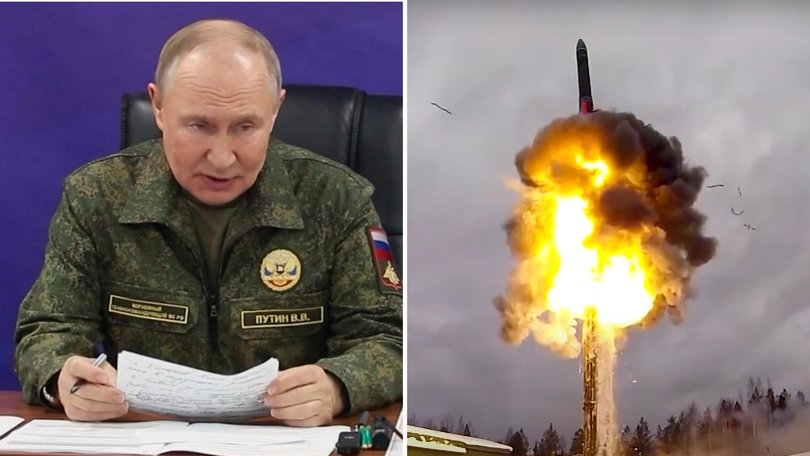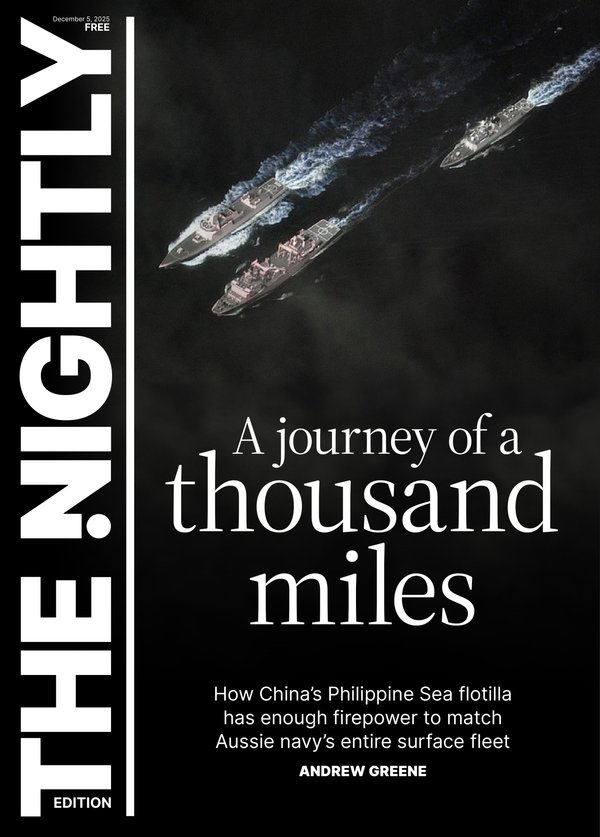Vladimir Putin says Russia now has nuclear-powered missile that can evade ‘Golden Dome’ defence system

Russia has successfully tested its nuclear-powered and nuclear-capable Burevestnik missile and is preparing to deploy it, President Vladimir Putin said Sunday, a pointed message to the West after plans for a summit with President Donald Trump collapsed.
Because the weapon runs on nuclear power, it can fly for much longer than other missiles can, and, the Kremlin says, is capable of evading missile defence systems.
“This is a unique product that no one in the world has,” Mr Putin said during a meeting with the chief of the general staff of the Russian Armed Forces, Valery Gerasimov, and other military commanders, according to a video released by the Kremlin.
Sign up to The Nightly's newsletters.
Get the first look at the digital newspaper, curated daily stories and breaking headlines delivered to your inbox.
By continuing you agree to our Terms and Privacy Policy.“We need to identify potential uses and begin preparing the infrastructure for deploying this weapon in our armed forces,” Mr Putin said.
Mr Putin, dressed in a military uniform, listened as General Gerasimov announced that the test had taken place Tuesday, and that the missile had remained in flight for 15 hours and flown 1400km.
General Gerasimov also said combat training launches of Yars and Sineva intercontinental ballistic missiles and two Kh-102 cruise missiles had taken place, which Mr Putin said “once again confirmed the reliability of Russia’s nuclear shield.”
The Burevestnik, which is also called the SSC-X-9 Skyfall, is named for the storm petrel, a bird that some believe foreshadows a storm. The weapon has been in the works for many years, and analysts say its successful test does not come as a surprise.
Still, it is cause for concern, according to Jeffrey Lewis, a nuclear nonproliferation expert at Middlebury College.
“It is a tiny flying Chernobyl,” he said, referring to the former power plant in Ukraine that became synonymous with nuclear disaster after it exploded in 1986.
“This is a bad development,” Mr Lewis. “It is one more science fiction weapon that is going to be destabilising and hard to address in arms control.”
Moscow started developing anti-missile defence systems in the early 2000s, after President George W Bush withdrew from the 1972 Anti-Ballistic Missile Treaty, Mr Lewis said.
When Russia announced the Burevestnik in 2018, Putin portrayed it as a response to US efforts to build comprehensive missile defense shields.
Mr Trump has spoken often of developing a shield he calls the “Golden Dome” that he says would make the United States impervious to missile attacks. The Burevestnik is engineered to evade a Golden Dome-like system.
“The US Golden Dome and generally missile defense development projects are among the main drivers for engaging in such costly and seemingly excessive projects,” said Dmitry Stefanovich, a Moscow-based researcher with the Institute of World Economy and International Relations.
Mr Putin’s announcement constitutes his first serious nuclear saber rattling since Mr Trump returned to office in January, said Hanna Notte of the James Martin Center for Nonproliferation Studies.
Last November, Russia deployed a nuclear-capable Oreshnik missile on the battlefield in Ukraine. Around the same time, the Kremlin lowered its threshold for using nuclear weapons.
Since then, Moscow had focused on using “hybrid threats” toward European countries like flying into NATO airspace, Notte said.
This move, she said, was aimed more at Washington.
In August, multiple observers noted activity at a Russian test site high above the Arctic Circle, as Mr Putin was preparing to travel to Anchorage to meet with Mr Trump.
The activity was extremely notable throughout August and September, and some tests that might have been conducted during that time were unsuccessful, Mr Lewis said.
Sunday’s announcement of the successful test came weeks after the Trump Administration lifted restrictions on Ukraine’s use of Western long-range weapons to target Russian oil refineries and plants.
Some scholars said, however, that the Burevestnik announcement should be viewed less in the context of battlefield developments in Ukraine and more related to Moscow’s offer to extend New START, the last remaining arms control treaty between the United States and Russia.
New START expires in February. In September, Mr Putin offered to extend existing limits on the number of deployed long-range nuclear weapons for one year, provided that the United States did the same.
Mr Trump said the proposal “sounds like a good idea to me.”
A one-year extension would also help the Kremlin keep its resources focused on the war in Ukraine by avoiding an expensive buildup of deployed weapons at a time when Russia’s expensive war is straining its economy.
On Sunday, after the Burevestnik was tested, the Kremlin spokesperson, Dmitri Peskov, pledged that any long-range strikes in Russia would be met with a “staggering” response.
Analysts question the game-changing capability of the Burevestnik.
“It’s not a terribly useful system,” said Pavel Podvig, a Geneva-based analyst of Russian nuclear forces. It is ostensibly intended to respond to a US nuclear attack, but such a strike would target the Burevestnik launchpads, he said.
Even so, Mr Lewis said, it is a disconcerting development for global security.
“This is what an arms race looks like,” he said.
Originally published on The New York Times
